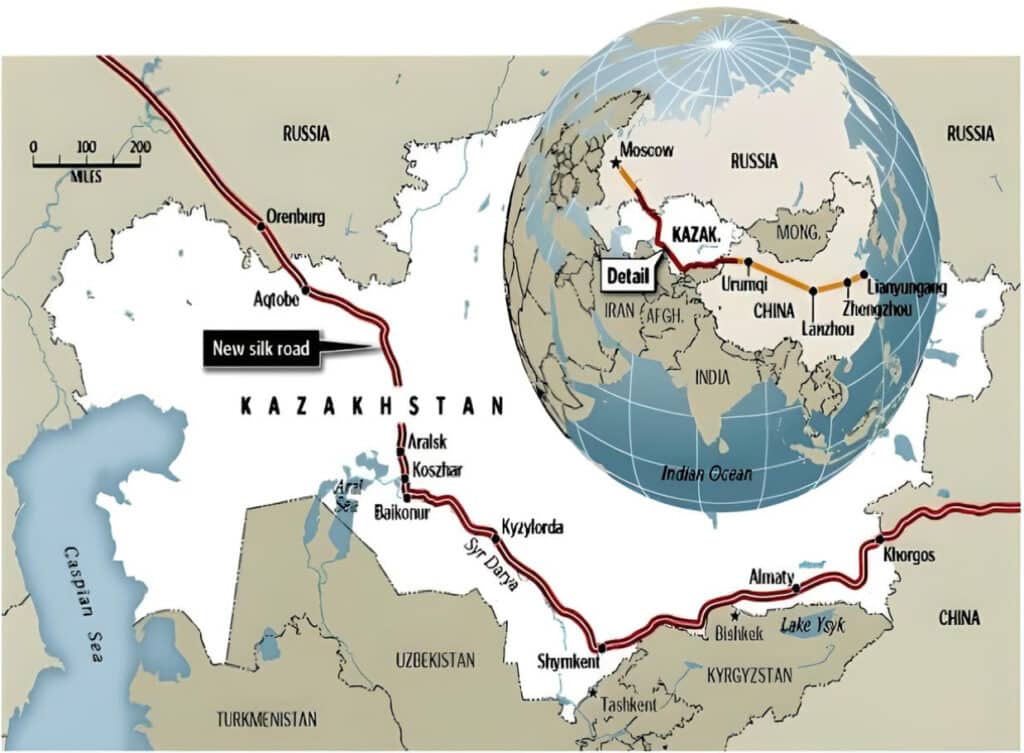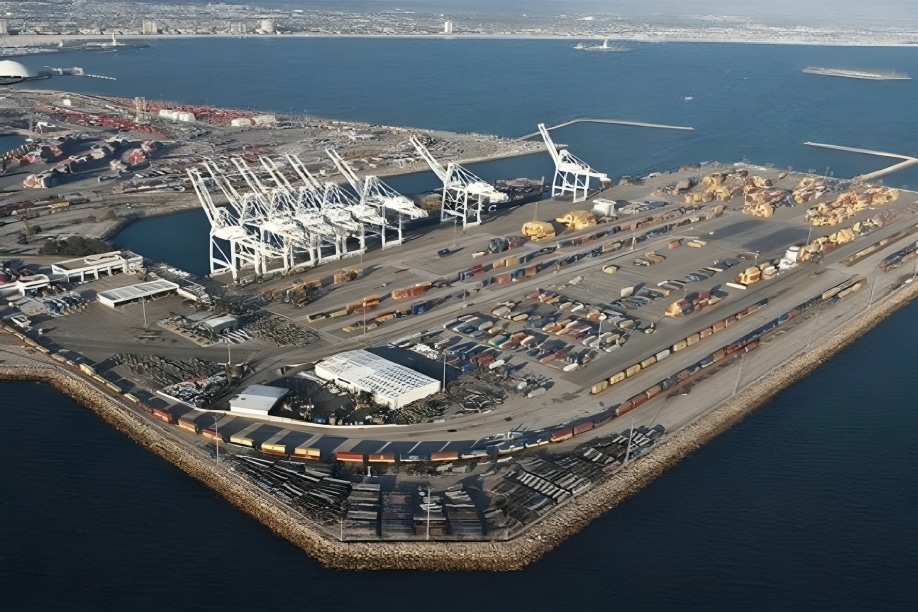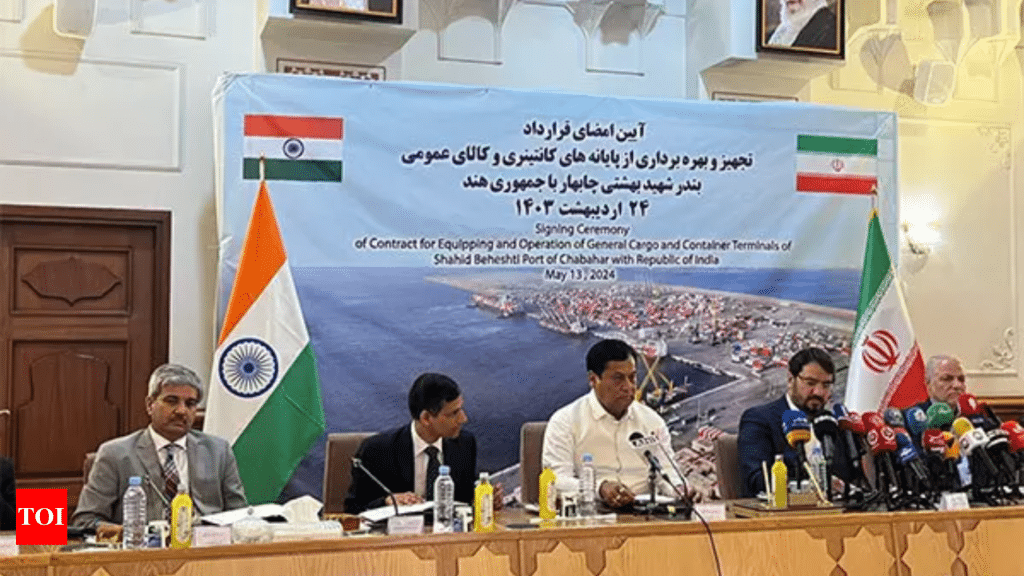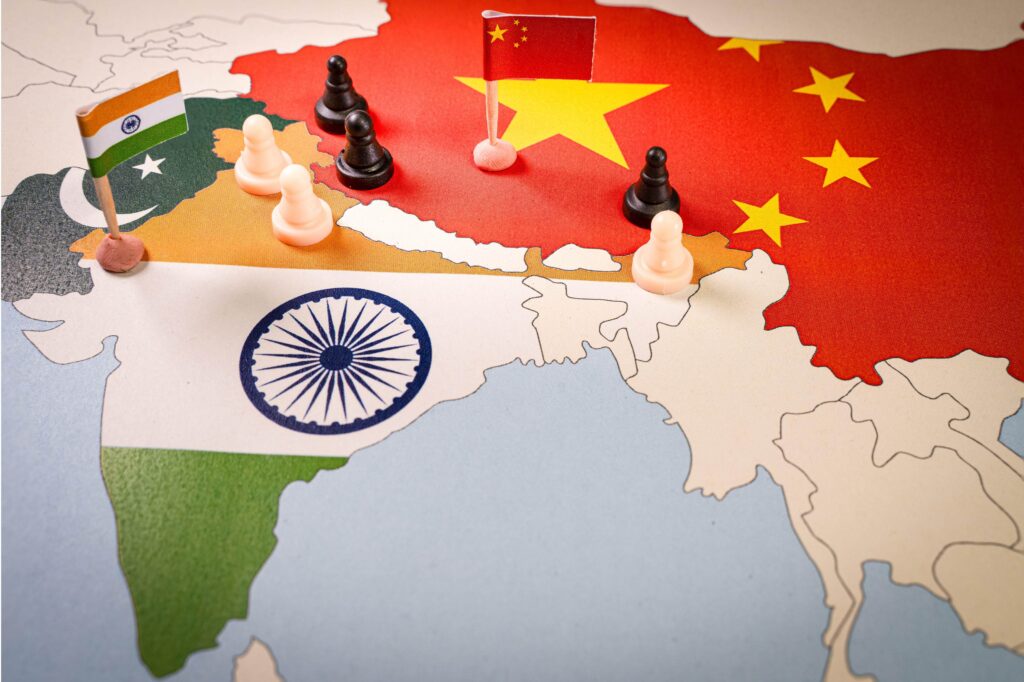In July 2022, the European Union banned imports of wood from Russia in an attempt to increase the economic cost of Russia’s invasion of Ukraine. Since the ban, exports of timber from Central Asia have skyrocketed.
The sudden exponential increase in log exports from Central Asian countries such as Kazakhstan and Uzbekistan suggests timber is being routed from Russia across the region on its journey to Europe. This enables Russian companies to obfuscate the illegal origins of their timber while still generating wealth for the Russian economy and its $12 billion wood industry.
Efforts by Russian companies to ‘mask’ the ultimate origin of their timber increases the risk for EU importers who, pursuant to the post-invasion timber ban and the EU Deforestation Regulation, are prohibited from importing timber or timber products with inputs sourced back to Russia.

But Russia’s ‘back-door’ trade activities in the region could soon be thwarted … by India, which has signed a 10-year contract to develop and operate the strategic Iranian port of Chabahar, recognised as the gateway to landlocked Afghanistan and energy-rich Central Asia and is the closest Iranian port to India. A deep-water port in the Sistan-Baluchis province of Iran, it is the closest Iranian port to India.
Under the long-term deal between India Ports Global Ltd and the Ports and Maritime Organisation of Iran, New Delhi is set to invest about $120 million in equipping the port and has also offered Tehran a credit window of $250 million with the aim of improving project-related infrastructure, taking the total contract value to $370 million. The landmark deal replaces a 2016 pact that was being renewed on an annual basis.

India wanted the port, on Iran’s southeastern coast along the Gulf of Oman, developed to help it gain access to war-torn Afghanistan. It also needed a route for its companies to enter Central Asia, bypassing rival neighbour Pakistan.
In 2023, Uzbekistan-registered Birch Products LLC received shipments of sawn birch and birch plywood from several Russian companies, four of which are Russian government contractors and one a sea terminal that is sanctioned by Ukraine for its role in facilitating the war. Birch Products, in turn, exported shipments of sawn birch and birch plywood throughout 2023 to a plywood and timber processing company registered in Estonia, an EU nation.
The same category of goods shipped to and from Uzbekistan suggests Birch Products is being used to evade the EU ban on Russian timber. Additionally, Birch was registered in August 2022, one month after the timber ban.
Besides giving India access to Central Asia, the Chabahar port could also help it counter Gwadar port in Pakistan, near the Iranian border, which is operated by the China Overseas Ports Holding Co. under the China-Pakistan Economic Corridor (CPEC).

One of Gwadar Port’s sales pitches was to provide easy and quick access to Central Asia, but the Indian-controlled port in Chabahar, located just 170 km west of Gwadar, can now deprive it of this advantage.
Tania Baloch, a political analyst based in Canada, said that the increase in the Indian footprint just across the border from Pakistan was significant following skirmishes between Pakistan and Iran in January.
“India has got a very good opportunity to take advantage of Pakistan-Iran border tensions and strategically compete with Chinese-controlled Gwadar Port, which has failed to kick off,” she said.
Gwadar Port has limited commercial activity, and hardly any ships dock there for unloading cargo. Pakistan has not been able to properly develop the port as planned. In 2015, a 300-megawatt coal power plant was approved for the port, but work has not yet started on that, resulting in a severe shortage of power needed for economic development in the city.
“The Chinese are frustrated with how things are not going as planned for Gwadar Port,” a Pakistani government official dealing with CPEC told Nikkei Asia on condition of anonymity. “They are not happy with the current state of the Gwadar project, but they can’t just pack and leave.”

According to Akshay Mathur, senior director at the New Delhi-based Asia Society Policy Institute, the agreement to operate the Chabahar port has other crucial geoeconomic benefits for India, such as accruing long-term international business experience in running an overseas port in a foreign free trade zone at a geopolitical hotspot.
“The negotiations between India and Iran for Chabahar may have been catalysed by China’s economic and suspected naval activity in the region, but India has been discussing the Chabahar port with Iran since 2003, a decade before China’s Belt and Road Initiative was formally launched in 2013,” Mathur said.
Sanjay Kumar Pandey, a professor at the Centre for Russian and Central Asian Studies at Jawaharlal Nehru University in New Delhi, said the major hurdle for the Chabahar port was the US approach to the agreement. Hours after India and Iran signed the 10-year pact, the US warned of possible sanctions against those engaging with Tehran.
Vedant Patel, principal deputy spokesperson at the US State Department, told reporters in Washington in response to a question on the deal that “any entity, anyone considering business deals with Iran, they need to be aware of the potential risk that they are opening themselves up to and the potential risk of sanctions.”

Although India and Iran had talked about developing the port for over 20 years, progress was stymied by US-led economic sanctions on Tehran over its controversial nuclear program.
“I did see some remarks which were made, but I think it’s a question of communicating and convincing and getting people to understand that this is actually for everybody’s benefit,” Indian External Affairs Minister Subrahmanyam Jaishankar said in response to a question on the US warning.
Minister Jaishankar pointed out that in the past, the US had been “appreciative of the fact that Chabahar has a larger relevance,” particularly in the context of humanitarian supplies to Afghanistan.
“We will work at it,” he said.
Harsh Pant, a professor of international relations at King’s College London, added: “While eyebrows would be raised in the West – and Washington in particular – I think that perhaps can be sorted with some serious strategic thinking.
“If India is not there, then the Chinese will come there.”






